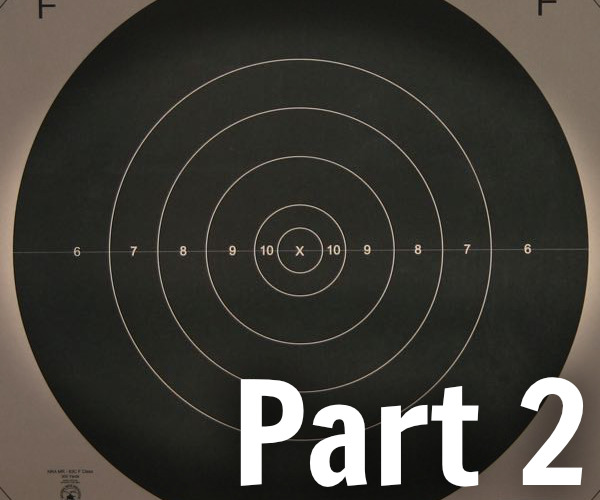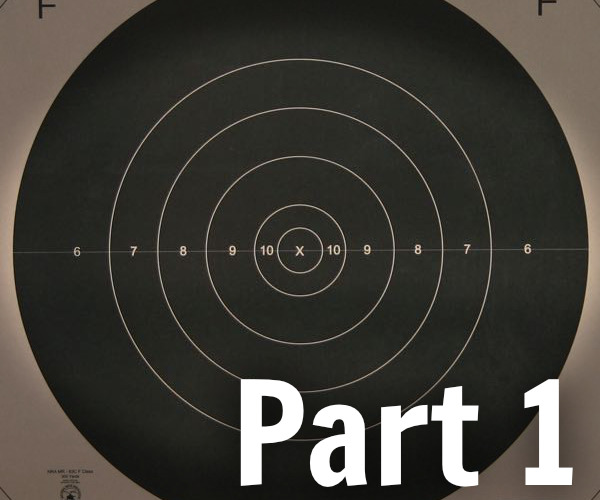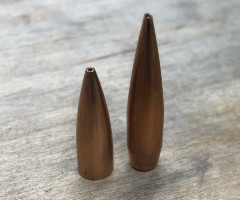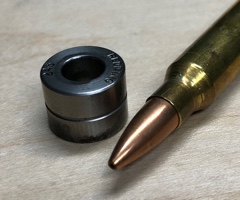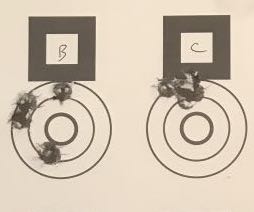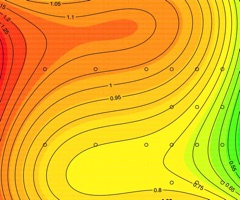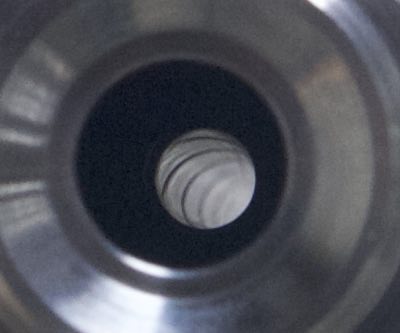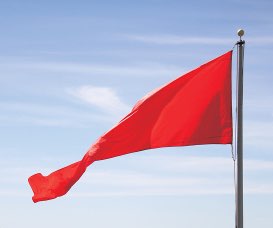Gyroscopic Stability Calculator
To use this tool, enter the required fields and click "Calculate"
About the Gyroscopic Stability Calculator
How does it work?
This calculator uses the classical method of calculating gyroscopic stability, as described by Bob McCoy in his book Modern Exterior Ballistics. Because the classical method requires detailed bullet dimensions and aerodynamic coefficients, we apply the simplifications derived by Don Miller in his article, A New Rule for Estimating Rifling Twist - An Aid to Choosing Bullets and Rifles and the later follow-up article, How Good are Simple Rules for Estimating Rifling Twist. The "Miller Rule", as it's often referred to, uses empirical data to simplify the math down to the point where only the bullet's length is required. The price in accuracy paid for this simplification is surprisingly small.
The classical equation to calculate gyroscopic stability is as follows. (\(S_g\)) is the gyroscopic stability factor, and must be above 1.0 if the bullet is to remain stable.
$$S_g = {{8\pi} \over {\rho_{air}t^2d^5C_{M\alpha}}}{{A^2}\over{B}} $$
The variables are as follows:
| \(S_g\) | The gyroscopic stability factor. A bullet is stable if \(S_g\) is over 1.0. |
| \(\rho_{air}\) | Air density |
| \(t\) | rifling twist |
| \(d\) | the bullet's caliber |
| \(C_{M\alpha}\) | the bullet's overturning moment coefficient |
| \({{A^2}\over{B}}\) | The square of the bullet's axial moment inertia divided by its transverse moment of inertia |
The first four variables are easy to measure and/or calculate. The last two can be troublesome. \({{A^2}\over{B}}\) can be calculated (tediously) if you have detailed information about the bullet's dimensions and weight distribution. \(C_{M\alpha}\) must be either measured in a sophisticated lab, or calculated with engineering software. What Don Miller did was to take those two hard to get numbers and find suitable substitutes that depend only on bullet length. He looked at data from known projectiles studied by the Ballistics Research Lab and came up with his remarkably accurate simplifications.
How much gyroscopic stability do I need?
If a bullet has a gyroscopic stability factor (\(S_g\)) of less than 1.0, it will tumble. So you need at least that. However, a bullet must also exhibit dynamic stability in addition to gyroscopic stability. While dynamic stability is a hard thing to pin down, it turns out that a little bit of margin on your \(S_g\) will help ensure that your bullet starts off stable. Anything less than about 1.25 is getting close to the edge.
Additionally, if you want to minimize yaw and wring the last tiny bit of ballistic performance, you should aim for an \(S_g\) of roughly 1.5.
Is there such a thing as over-spinning a bullet?
Yes. The faster you spin a bullet, the less accurate it will be. There is no reason to spin a bullet any faster than necessary to get the \(S_g\) that you want. For optimal accuracy, I shoot for 1.3-1.4. For ballistic optimization, 1.5-1.7 is a better number. Any faster will result in poor precision and possibly bullet destruction.
How accurate is the Miller Rule
Surprisingly so. When compared with the more detailed classical methods of determining bullet stability, Miller matches up very well. There is a caveat, however. Miller rule is based on a library of test data collected by the BRL. The less your bullet looks like the projectiles used in the library, the greater chance there is for the rule to fall short. In other words, Miller works great for sane bullets. If you start getting into crazy numbers (say, a 200 grain .224 bullet) it's not going to work very well.
Is the calculator accurate for flat based bullets?
More or less. The data that Miller used to crate the rule consisted of data from boattail and flat-based projectiles. The data for boattail bullets is a better fit than that for flat based bullets, but it's still a reasonably good approximation. As with any calculation, use an appropriate margin of safety, as real life sometimes intervenes.
Is the calculator accurate for plastic tipped bullets?
More or less. Miller's source data did not include plastic tipped projectiles. However, knowledge of the mechanics of stability tell us that the model will generally be conservative for polymer tipped bullets.
The Bison Ballistics Email List
Sign up for occasional email updates.
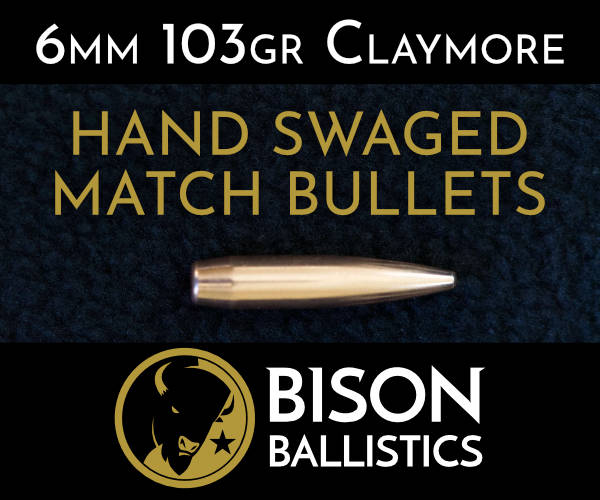

Want to Support the Site?
If you enjoy the articles, downloads, and calculators on the Bison Ballistics website, you can help support it by using the links below when you shop for shooting gear. If you click one of these links before you buy, we get a small commission while you pay nothing extra. It's a simple way to show your support at no cost to you.
